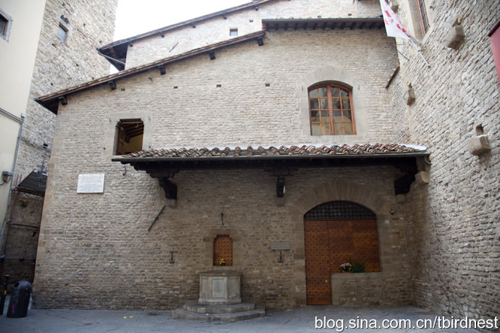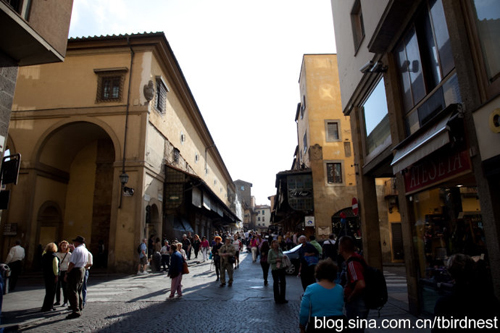This is a romantic dead time. Information is more developed, people more impetuous; traffic more convenient, but not as good as miss. If you woke up, found in Florence in sixteenth Century (FlorenceThere is no subway), no iPhone, no forever won't finish the next session and the next task, can sing "love is like an onion, also can cause tears" such cells, may encounter endangered love. With this idea, to 2011 Florence, look for that in the name of a classical humanism liberation, feel the air in the lazy and indifferent, learning to live again, learn to love.
 Strong sense of vicissitudes of life
Strong sense of vicissitudes of lifeAnd accidentaly across medieval last poets ""
In a narrow street near the Florence municipal square, St. Gelinta Road No. 1, the residence was forgotten and independent. And medieval last poets "accidentaly across" in the corner brick portraits and sculptures, the original Dante lived Xiaolou have be close by.
Push door into, a with historical flavor of coolness hit, illusion, Dante still live here thinking. The house furnishings simple and rustic. Through the glass, can see the stunning masterpiece "the Divine Comedy" manuscript has been in the years after the pure yellow. Its owner might not have thought of, their works will be epoch-making works, after several centuries still worship, pay...... The Renaissance city of Dante and the history of Florence blend together, not only because of him as a poet once growth here, it is because he once in order to realize his political ideal here and fight.
 The center of the city
The center of the cityYouth be in high and vigorous spirits of Dante had been selected as one of the six chief executive of the Republic of Florence, he actively opposeRomeThe Pope and the feudal aristocracy interference in Florence and control. Therefore suffer from corruption and antipope charges, he not only was confiscated all his possessions, and was sentenced to life in exile, until dieItalyNortheast of ravenna. In 20 years in exile, Dante, although every hour and moment not miss Florence raise their, Dante finished his opening Renaissance masterpiece -- "the Divine Comedy" door. In the 100 chapter of the long poem, the poet in "hell", "Purgatory" and "heaven" view of three, under the framework of new voices in the seemingly old world.
Dante is the Renaissance Italy first raised the banner of the scholars of love. He believes that "love" is the power to remove mountains and drain seas, is "the entire universe". He thinks, love is originated from the rational, but also by the rational. Though people have physical needs, but there is a rational person, "the ability to choose love of good and evil", "Bayard said this capacity for free will". Therefore, "even if all love is born of inevitable need", not from the rational control.
Was about to leave the Casa di Dante, suddenly attracted to a painting on the wall, depicts is when Dante and her lover Beate Lizzie in the bridge's beautiful encounter. Beate Lizzie was married and died as Dante life unbearable sorrow. Seven centuries later, the Arnaud river is still glittering, winding in Florence; the old bridge has many shops, bustling crowd, but a renaissance version of "the bridges of Madison County" but with the hero eternal love is forever frozen in this painting.
One of the world's largest museum "Uffizi museum"
To leave Casa di Dante, walk a few moments, then to the municipal square. Municipal plaza was built in thirteenth Century, because of the ancient architecture and sculpture the surrounding is considered Italy's most beautiful square. Square in the southeastern corner is the traditional administrative center "old house", this is the castle building square once for the Florence chief executive residence, by the sizes of square stones. "On both sides of the old palace" the standing executive chainsDaliStone body sculpture, is in the middle of the famous Michelangelo "David" (copy). "Old house" on the left side is a corridor of advanced "Gothic" style, decorated with exquisite sculpture, a Cellini "Pal Huges", "Sabin's Bologna chapter." etc..
No comments:
Post a Comment